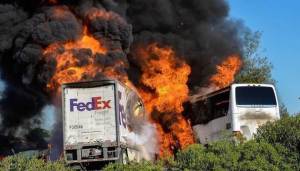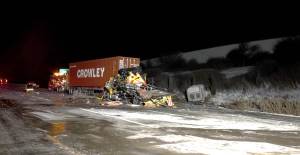By Acting Chairman Christopher A. Hart

Yesterday was my first opportunity to “gavel” a Board meeting since becoming Acting Chairman in April.
We met to deliberate on the NTSB report on the crash of Asiana Flight 214 in San Francisco last July. The report was the result of a nearly year-long investigation.
The experience was a reminder of just how thorough this agency’s investigations are. As in previous accident investigations, they left no stone unturned.
They examined the crew’s routines before and during the flight. They looked at the design features of the airplane. They dissected the call-outs heard on the cockpit voice recorder and discussed the call-outs that were not made.
They looked for every possible contributor to the accident. And, they looked at what worked and what didn’t to help people survive the crash. This included both cabin safety and emergency response.
As we deliberated, it struck me once more how important our mission is – preventing mishaps that can cause so many people to suffer injuries, some of them extensive and life-changing.
We were discussing what safety advances allowed so many to survive.
And sadly, we were discussing how three young women lost their lives.
This is the second time I have served as a Member of the NTSB. The first was from 1990-1993. My present stint began in 2009. Like my fellow Board Members, I have always felt the strong need to get our accident reports and recommendations as close to perfect as possible.
Anything less would short-change the sterling work that our investigators do. It would do a disservice to those who lost loved ones, and to those who suffered injuries.
But getting it right might means something even more important. It might mean preventing a future accident. It might mean saving lives when a future accident does happen.
As a Board Member, I’ve watched former NTSB Chairmen wield the gavel with poise and purpose. For all the reasons I’ve mentioned, it’s heavy when you first pick it up. The dais looks different from the center chair.
But the experience also reminded me of what the Board has accomplished to date. Past Board recommendations have led to advances in cabin safety.
For example, seats that can withstand 16 times the force of gravity and fire blocking materials almost certainly saved lives in this accident.
Nevertheless, the crash of Asiana Flight 214 – like so many accidents – demanded a full discussion of multiple factors which led to fatal mistakes.
The final manifestation of all of those factors was that the pilot did not fully understand how the airplane’s automated features interacted. He relied on the auto-throttle to maintain speed, not knowing that he had inadvertently deactivated the auto-throttle.
This accident also demanded a full discussion of a tragedy that happened after the crash.
In the chaos of the crash site, Aircraft Rescue and Firefighting personnel knew that seconds counted. The airplane was on fire. They did not know whether or when the fire might suddenly intensify.
Much of their work was exemplary. They pulled five people from that burning cabin.
But as they rushed to save lives, their vehicles rolled over a passenger who had been ejected from the airplane.
Yesterday, the Board adopted more than 25 recommendations addressing both the crash and the post-crash response, and all the factors surrounding them.
If our recommendations are acted on, the commercial aviation industry, which already has an exemplary safety record, will hopefully continue improving its safety – just as it has been doing since I first served as a Member back in 1993.





